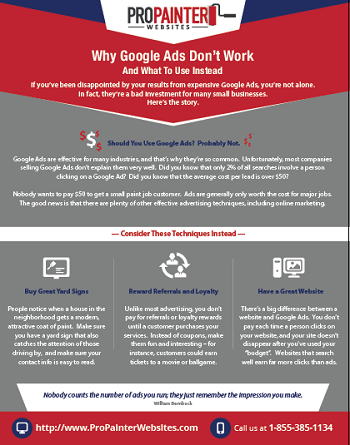Vital Seasonal Aspects Of Commercial Outside Painting: What You Should Comprehend
Vital Seasonal Aspects Of Commercial Outside Painting: What You Should Comprehend
Blog Article
Content By-McLamb Bagger
When you're planning an industrial outside painting task, seasonal variables can make or break your outcomes. You'll wish to take into consideration just how temperature level and humidity influence paint application and drying times. Choosing the ideal period can guarantee your paint adheres effectively and lasts much longer. However which periods are truly the best for this sort of job? Let's check out the key elements that can affect your task's success.
The Influence of Temperature on Paint Application
When you're intending an industrial exterior paint project, the temperature level can significantly influence just how well the paint sticks and dries.
Ideally, you wish to repaint when temperatures vary in between 50 ° F and 85 ° F. If it's too cool, the paint might not treat properly, bring about issues like peeling off or fracturing.
On the flip side, if it's as well hot, the paint can dry as well promptly, stopping correct adhesion and resulting in an unequal coating.
You should additionally think about the moment of day; early morning or late afternoon uses cooler temperatures, which can be more desirable.
Constantly inspect the supplier's referrals for the particular paint you're using, as they usually offer assistance on the perfect temperature variety for ideal outcomes.
Humidity and Its Result on Drying Times
Temperature level isn't the only environmental aspect that affects your business external paint project; moisture plays a considerable role as well. High moisture degrees can reduce drying times substantially, impacting the overall high quality of your paint task.
When the air is filled with wetness, the paint takes longer to cure, which can cause problems like poor attachment and a greater threat of mold development. If you're painting on a particularly humid day, be gotten ready for prolonged delay times in between layers.
It's essential to keep track of neighborhood weather conditions and plan accordingly. Ideally, go for moisture degrees between 40% and 70% for ideal drying.
Maintaining these factors in mind ensures your job stays on track and provides a long lasting finish.
Best Seasons for Commercial Outside Paint Projects
What's the very best time of year for your commercial outside paint projects?
https://www.realhomes.com/advice/painting-over-wallpaper and very early fall are normally your best bets. Throughout these seasons, temperatures are moderate, and moisture levels are usually lower, producing excellent problems for paint application and drying out.
https://exterior-painters-near-me54332.blazingblog.com/34335057/increase-your-home-s-exterior-appeal-benefits-of-involving-expert-residence-painters , which can create paint to dry too quickly, resulting in inadequate adhesion and surface. In a similar way, winter season's cool temperature levels can impede proper drying out and healing, running the risk of the durability of your paint work.
Go for days with temperature levels between 50 ° F and 85 ° F for ideal results. Remember to check the local weather forecast for rainfall, as damp conditions can destroy your task.
Planning around these aspects guarantees your painting task runs smoothly and lasts longer.
Conclusion
To conclude, intending your commercial external paint jobs around seasonal factors to consider can make a considerable distinction in the result. By scheduling job during the optimal temperature levels and moisture levels, you'll ensure much better bond and drying times. Keep in mind to keep an eye on neighborhood weather forecasts and select the correct time of year-- spring and early loss are your best options. Taking these actions will help you attain a durable and professional surface that lasts.
